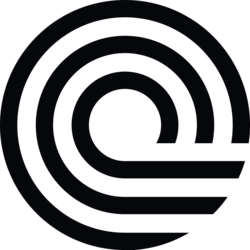Microsoft has released images of its rejected Start menu redesigns. The concept designs were tested with hundreds of people before a final design was selected. The reveal gives insight into the iterative design process that major tech companies undertake to create user-friendly interfaces.
Initial Design Concepts
The initial design concepts for the Start menu showed a range of ideas, from minimalist layouts to more cluttered options. Microsoft was exploring how to balance simplicity with functionality to meet the needs of a diverse user base. These early designs aimed to address issues such as ease of navigation, visual hierarchy, and customization options.
One of the rejected concepts featured a tile-based layout similar to the Windows 8 Start screen. While this design offered a visually striking interface, it ultimately proved too complex for users to navigate efficiently. Feedback from testers highlighted the need for a more streamlined approach that prioritized quick access to essential features.
User Feedback and Testing
The rejected Start menu redesigns went through extensive rounds of user testing to gather feedback on usability and visual appeal. Microsoft worked closely with participants to understand their preferences and pain points when interacting with the interface. This user-centered approach was crucial in refining the design to better align with user expectations.
Testers were asked to perform tasks such as launching applications, customizing the menu, and switching between different sections. Their interactions and feedback helped Microsoft identify areas that needed improvement, leading to the elimination of certain design elements that hindered user experience.
Accessibility and Inclusivity
Accessibility and inclusivity were key considerations in the rejected Start menu redesigns. Microsoft aimed to create a design that would cater to a wide range of users, including those with diverse needs and preferences. This involved testing the designs with participants of varying age groups, technical expertise, and accessibility requirements.
One of the challenges was ensuring that the Start menu was easy to navigate for users with mobility or vision impairments. Microsoft incorporated features such as keyboard shortcuts, screen reader compatibility, and high contrast modes to enhance accessibility. While some design elements were well-received by testers, others needed refinement to meet accessibility standards.
Visual Design and Branding
The visual design of the rejected Start menu redesigns showcased Microsoft's commitment to modern aesthetics and branding consistency. The company explored different color schemes, icon styles, and typography choices to create a cohesive look that resonated with users. Design elements such as animations, transitions, and live tiles were also tested to enhance the overall user experience.
Feedback on the visual design was mixed, with some testers praising the clean and organized layout, while others found certain elements distracting or inconsistent with the Windows brand. Microsoft took this feedback into account to refine the design and create a Start menu that balanced visual appeal with usability.
Customization and Personalization
Customization and personalization options were key features in the rejected Start menu redesigns. Microsoft aimed to empower users to tailor the interface to their preferences and workflow. This involved testing different layouts, sizing options, and widget configurations to provide users with flexibility in organizing their digital workspace.
Testers appreciated the ability to customize the Start menu to suit their needs, but some felt overwhelmed by the sheer number of options available. Microsoft explored ways to simplify the customization process without compromising on functionality, leading to the selection of design elements that offered a good balance of personalization and ease of use.
Final Design Selection
After rounds of iteration and refinement, Microsoft finalized the design of the Start menu based on user feedback and internal evaluations. The selected design addressed the key issues identified during testing, such as navigation difficulties, accessibility challenges, and visual inconsistencies. By incorporating the best elements from the rejected concepts, Microsoft created a Start menu that met the needs of users across different use cases.
The final design retained familiar elements from previous Windows versions while introducing new features and improvements to enhance the overall user experience. Microsoft's rigorous design process and commitment to user feedback resulted in a Start menu that balanced innovation with usability, setting a benchmark for future interface design in the tech industry.
If you have any questions, please don't hesitate to Contact Us
Back to Technology News















































